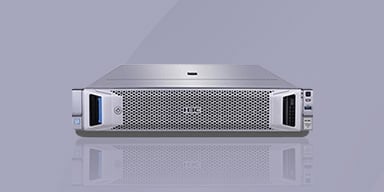| Title | Size | Downloads |
|---|---|---|
| 00-About the Command References-book.rar | 6.61 MB |
- Table of Contents
- Related Documents
-
About the command references
|
Hardware |
Applicable software versions |
|
H3C S5560S-EI switch series |
Release 6309P01 and later |
|
H3C S5560S-SI switch series |
Release 6310 and later |
|
H3C S5500V3-SI switch series |
Release 6310 and later |
|
H3C MS4520V2 switch series (MS4520V2-28S and MS4520V2-24TP switches) |
Release 6310 and later |
|
H3C WS5850-WiNet switch series |
Release 6308P01 and later |
The command references cover the following contents:
|
Command reference |
Content |
|
Fundamentals Command Reference |
Covers the commands for logging in to and setting up the device. This command reference includes: · CLI (command privilege settings and CLI management commands). · RBAC. · Logging in to the switch. · FTP and TFTP. · File system management. · Configuration file management. · Software upgrade. · Device management. · Tcl. · Python. · License management. |
|
Virtual Technologies Command Reference |
Covers the commands for configuring the Intelligent Resilient Framework (IRF) technology features. It covers planning the switch roles in the IRF fabric, connecting the IRF links, and detecting and maintaining the IRF fabric. |
|
Layer 2—LAN Switching Command Reference |
Covers the commands for configuring Layer 2 technologies and features in a LAN switched network. This command reference includes: · Ethernet interface. · Loopback, null, and inloopback interfaces. · Bulk interface configuration. · MAC address table and MAC Information. · Ethernet link aggregation. · Port isolation. · Spanning tree. · Loop detection. · VLAN (including VLAN, super VLAN, private VLAN, and voice VLAN). · MVRP. · QinQ. · VLAN mapping. · LLDP. · L2PT. · PPPoE relay. |
|
Layer 3—IP Services Command Reference |
Covers the commands for configuring and managing IP addressing (including static and dynamic IPv4 and IPv6 address assignment), network performance optimization, and ARP. This command reference includes: · ARP (including gratuitous ARP, proxy ARP, ARP snooping, and ARP direct route advertisement). · Fast forwarding. · Adjacency table. · IP performance optimization. · IPv6 fast forwarding. · Tunneling. · GRE. · HTTP redirect. |
|
Layer 3—IP Routing Command Reference |
Covers the commands for configuring routes for IPv4 and IPv6 networks of different sizes, route filtering, route control, and policy-based routing. This command reference includes: · Basic IP routing. · Static routing. · RIP. · OSPF. · IS-IS. · BGP. · Policy-based routing. · IPv6 static routing. · RIPng. · OSPFv3. · IPv6 policy-based routing. · Routing policy. |
|
IP Multicast Command Reference |
Covers the commands for Layer 2 IPv4 multicast protocols (including IGMP snooping, PIM snooping, and multicast VLAN) and Layer 2 IPv6 multicast protocols (including MLD snooping, IPv6 PIM snooping, and IPv6 multicast VLAN). This command reference includes: · IGMP snooping. · PIM snooping. · Multicast VLAN. · Multicast routing and forwarding. · IGMP. · PIM. · MSDP. · MLD snooping. · IPv6 multicast routing and forwarding. · MLD. · IPv6 PIM. |
|
MCE Command Reference |
Covers the commands for configuring MCE. |
|
ACL and QoS Command Reference |
Covers the commands for classifying traffic with ACLs, and allocating network resources and managing congestions with QoS technologies to improve network performance and network use efficiency. This command reference includes: · ACL. · QoS (including QoS policy, priority mapping, GTS and rate limit, congestion management, and aggregate CAR). · Time range. |
|
Security Command Reference |
Covers security feature commands. Available security features include identity authentication (AAA), access security (802.1X, MAC authentication, and port security), secure management (SSH), SSL, and attack protection (IP source guard and ARP attack protection). This command reference includes: · AAA. · 802.1X. · MAC authentication. · Portal. · Web authentication. · Port security. · User profile. · Password control. · PKI. · IPsec (including IPsec, IKE, and IKEv2). · SSH. · SSL. · Attack detection and prevention. · TCP attack prevention. · IP source guard. · ARP attack protection. · ND attack defense. · uRPF. · SAVI. · MFF. · Crypto engine. · FIPS. · 802.1X client. |
|
High Availability Command Reference |
Covers high availability commands for managing failure detection and failover. Failure detection technologies focus on fault detection and isolation. Failover technologies focus on network recovery. This command reference includes: · Ethernet OAM. · CFD. · DLDP. · RRPP. · ERPS. · Smart Link. · Monitor Link. · VRRP. · BFD. · Track. |
|
Network Management and Monitoring Command Reference |
Covers the commands that help you manage and monitor your network, for example, manage system events, collect traffic statistics, sample packets, assess network performance, and test network connectivity. This command reference includes: · System maintenance and debugging (ping, tracert, and system debugging). · NQA. · PoE. · NETCONF. · CWMP. · EAA. · Process monitoring and maintenance. · Mirroring (including both port and traffic mirroring). · sFlow. · Information center. · VCF fabric. · Cloud connection. · SmartMC. · Winet. |
|
Telemetry Command Reference |
Covers the commands for configuring gRPC. |
|
OpenFlow Command Reference |
Covers the commands for configuring OpenFlow. |





